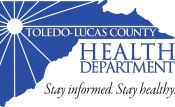Sewage Treatment System Program
There are over 12,000 household sewage treatment systems in Lucas County that if properly maintained, can be a safe and effective means of wastewater disposal. However, failed or improperly discharging sewage system can cause sewage to contaminate our surface and ground water, the same water that we all swim and drink. The mission of the TLCHD is to minimize the threat of surface water and ground water contamination from malfunctioned or improperly designed, installed, or maintained household sewage treatment systems (HSTS) in order to prevent disease transmission and to protect the quality of surface and ground water. TLCHD performs inspections, regulate contractors, educate homeowners, and enforce sewage regulations.
Sewage Treatment System Assessment program
Effective January 1, 2016, the sewage regulation requires all health departments to develop a program for the administration of operation and maintenance (O&M) management for sewage treatment systems and system owner education. To develop the O&M program, TLCHD is conducting an assessment of all HSTS in Lucas County to determine the type, age, condition, and complexity of the HSTS. The complexity of the system refers to whether the system uses mechanical components to treat the sewage effluent or to dose the sewage effluent into the pipes for dispersal. Surface water sampling is also being conducted as part of the assessment to test for fecal coliform and E. coli. The assessment is only being conducted for data collection and monitoring purposes but no fee is being assessed to the homeowners. Currently, the assessment is conducted by two staff sanitarians and the implementation of the program started in August 2015.
- Assessments completed in 2015: 324
- Surface Water samples collected in 2015: 93
Harmful Algal Blooms
Harmful algal blooms, or HABs, occur when colonies of algae—simple plants that live in the sea and freshwater—grow out of control while producing toxic or harmful effects on people, fish, shellfish, marine mammals, and birds. The human illnesses caused by HABs, though rare, can be debilitating or even fatal. HABs have been reported in every U.S. coastal state, and their occurrence may be on the rise. HABs are a national concern because they affect not only the health of people and marine ecosystems, but also the ‘health’ of local and regional economies.
For information about HABs from the National Oceanic and Atmospheric Administration, visit their website here.
Ohio Department of Health has resources for Harmful Algal Blooms here.
For questions regarding City of Toledo Water Quality as it relates to Harmful Algal Blooms, visit the City’s website here.


